Student Voices
Essays from current students and a recent graduate about remote learning during the COVID-19 pandemic.
Teaching During the Pandemic
Brianna Peterson ‘21
As a student during the quick March 2020 switch to virtual learning 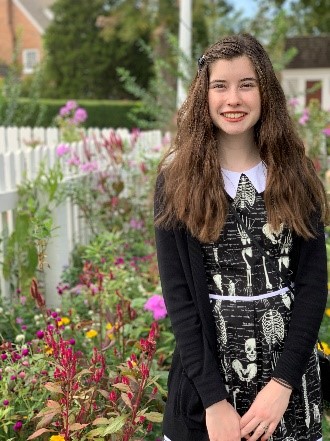 amid a beginning pandemic, I was pretty focused on myself and figuring out how to adapt my learning style to the new requirements asked of me. I’m sure many of my fellow students felt the same way; however, I think it is important to remember that professors faced the same problems we did. They had to figure out how to deliver information virtually and deal with the uncertainties that each day brought.
amid a beginning pandemic, I was pretty focused on myself and figuring out how to adapt my learning style to the new requirements asked of me. I’m sure many of my fellow students felt the same way; however, I think it is important to remember that professors faced the same problems we did. They had to figure out how to deliver information virtually and deal with the uncertainties that each day brought.
I spent some time interviewing Professor Rachel O’Brien, who taught Advanced Analytical Chemistry in the Spring 2020 semester and who is now teaching Instrumental Analysis in a hybrid format for the Fall 2020 semester. Like many of us, Professor O’Brien was on spring break, enjoying some time away from school. And like many of us, she was far away from school when learning shifted online and did not have access to any class material outside of what was on her computer. Professor O’Brien remarked that the most difficult part of the sudden transition to online learning was the rapid pace at which she had to learn all of the new online tools. The always-changing news stories and policy decisions also created uncertainty-related stress that turned mundane tasks into monumental ones.
Virtual learning isn’t all bad news. Professor O’Brien appreciated the structure and relief that class each day brought. She also remarked that online learning gave greater flexibility to those with hectic schedules and encouraged her to focus on condensing information as much as possible. Instead of giving an hour-long remote lecture, course material was delivered in a streamlined 20-minute presentation containing the most important information. Even in this “more” in-person semester, Professor O’Brien has still tried her best to keep lectures short and focus on the information that matters most.
Just remember students, our professors struggle too. They went through and continue to go through many of the same challenges we face every day in this era of isolation and virtual learning. While we may struggle to learn, they struggle to figure out how to teach. Professor O’Brien offers some parting advice: remember to be flexible, appreciate that getting any amount of work done during a pandemic is a huge success, and be patient with yourselves and your professors.
A Virtual COLL 300: At Home with the World
Celeste Campos ‘22
With the world’s eyes focused on pharmaceutical companies and the d rug development process of COVID-19 vaccines, what better timing to learn about the drugs of antiquity, the rise of the pharmaceutical industry, the drug development process, and more? From the (dis)comfort of their own homes, students from all over the country gathered virtually on Zoom every day during the second summer session, to learn the history of medicinal chemistry and drug development. Ordinarily, Dr. Dana Lashley would teach this COLL 300 class in Cambridge, but remote learning was unsurprisingly the only method of delivering the course this past summer.
rug development process of COVID-19 vaccines, what better timing to learn about the drugs of antiquity, the rise of the pharmaceutical industry, the drug development process, and more? From the (dis)comfort of their own homes, students from all over the country gathered virtually on Zoom every day during the second summer session, to learn the history of medicinal chemistry and drug development. Ordinarily, Dr. Dana Lashley would teach this COLL 300 class in Cambridge, but remote learning was unsurprisingly the only method of delivering the course this past summer.
A virtual ‘study abroad’ program may have raised a few eyebrows. How could sitting in front of a screen ‘introduce you to people and ideas that are outside your sphere of direct experience,’ one of the purposes of the COLL 300 curriculum? For the students who took this course, it did.
Over three weeks, the virtual lessons covered a comprehensive range of topics. Notably, a few lecture sessions were dedicated not only to the chemistry behind several drugs, including morphine, cocaine, and heroin, but also discussions about their use and misuse. The class delved into how institutional failures to check the safety and efficacy of these drugs with rigor have led to devastating consequences such as addiction and death. While these consequences birthed a generation of protective laws and FDA restrictions, one of which includes the extended drug R&D process, these restrictions have been, unfortunately, subject to disapproval during a global pandemic.
To further stimulate students’ curiosity on drugs and their socioeconomic impacts, students had the freedom to select topics and present their research. Topics ranged from epileptic treatments to weight loss management, and even to hallucinogens such as LSD, psilocybin, and DMT, for which a student generously provided a crude recipe. Extending to current issues, a few students presented on ketamine and nerve gases, often associated with police use on the streets in recent headlines. Sharing with their peers a wide range of eye-opening topics, students connected with and learned from each other despite the challenges of a remote classroom.
Dr. Lashley and the students truly rose to the challenge of the COLL 300 program this summer by addressing the world’s current issues through the screen. Providing accessibility and flexibility to those who would not have had the chance to travel abroad during the breaks or the academic year, the virtual COLL 300 course has an added value of equity. With online learning as a more familiar mode of course delivery, William & Mary should consider offering a virtual COLL 300 consistently in the future.
A Brief Exploration of the Pros and Cons of Remote Learning
Daria Moody ‘22
The switch to online learning has radically altered the layout of academic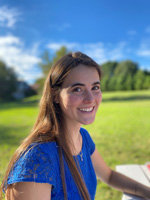 life at William and Mary. The continued modified courses administered today provide many opportunities for trying novel ways to approach course material, along with the many challenges, leaving students and professors with mixed feelings about remote learning. For students, the transition mid-semester left many facing technological issues, operating without a calculator and textbooks in chaotic environments. Finding strategies to focus and motivate outside of the campus setting took time. Accomplished in a variety of ways, some students developed a stricter schedule and made an effort to fully separate work and rest.
life at William and Mary. The continued modified courses administered today provide many opportunities for trying novel ways to approach course material, along with the many challenges, leaving students and professors with mixed feelings about remote learning. For students, the transition mid-semester left many facing technological issues, operating without a calculator and textbooks in chaotic environments. Finding strategies to focus and motivate outside of the campus setting took time. Accomplished in a variety of ways, some students developed a stricter schedule and made an effort to fully separate work and rest.
It was not just the students navigating new territory and they knew it. Three current chemistry majors (two juniors and one senior) discussed some of the challenges their professors faced, acknowledging that “restructuring the syllabus to create more flexibility for students while following the course curriculum” is incredibly difficult. They recognized that managing the flood of questions from students must have been overwhelming and transferring in-person labs to an online format took tremendous creativity. All of that while navigating their own computer troubles.
The obstacles did not completely obscure the pros that have arisen from the unprecedented circumstances, however. Students appreciated the lack of travel time between classes and other meetings, allowing them more time to re-watch lectures at their desired speed, and make ample use of the pause function, something unavailable in many classes pre-pandemic.
The troubleshooting of last semester has also made online courses this semester a bigger hit with students. One student wrote of her courses this semester, “My chemistry classes are predominantly lecture-based and the main difference between how class is structured now versus before [the pandemic] is that lecture material is now more accessible than before and classes are more organized.” Course material is in more digestible chunks and many professors have scattered “learning checkpoints” throughout the semester, whether it is more and smaller quizzes or problem sets. This has been helpful for students who are still trying to find the best way to harness their focus, discipline, and ability to work in less than ideal conditions. According to one chemistry major, STEM courses are more difficult to take online because of the conceptual complexity, even if the workload is lower. In his opinion, the classes that translated best to the online format had “readily and quickly uploaded recorded lectures.” The key for many seems to be flexibility in both the course structure as well as in the students enrolled.
For many, strategies such as finding distinct work and rest areas, increasing awareness of deadlines and class times, and staying on top of the work, although they have always been important, have become necessary. “It is very easy to slip up once or twice and be perpetually behind, particularly if there is no one to keep you accountable.” With some students reporting a decrease in their grade due to online learning and some reporting exactly the opposite, perhaps it is not surprising that the desire to continue online courses even after it is no longer necessary divides the student population.
A Pandemic Silver Lining
Jesse Derringer ‘22
In the quiet cove of one’s mind or around a lively dinner table in 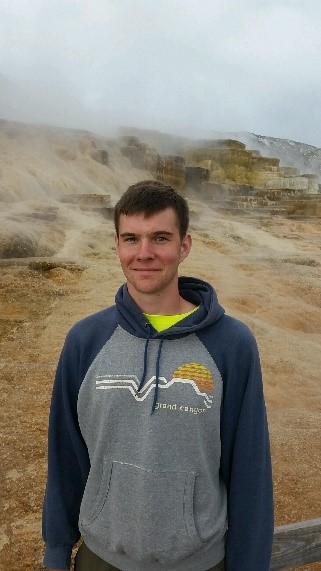 the midst of friends and family, I think it is important to take time to reflect on the highs and lows, the passes and pitfalls, that mark our journey thus far. I think the typical time for introspection is close to New Years. People enjoy their vacations and staycations with loved ones. They banter over nutmeg, OJ, or even champagne, but ultimately their eyes and thoughts turn toward the new beginning. These moments, plump with joy, can mark the turning point in for some people but a continuation for others. Some find motivation to diverge from the habits which grate them down while others keep on keeping on.
the midst of friends and family, I think it is important to take time to reflect on the highs and lows, the passes and pitfalls, that mark our journey thus far. I think the typical time for introspection is close to New Years. People enjoy their vacations and staycations with loved ones. They banter over nutmeg, OJ, or even champagne, but ultimately their eyes and thoughts turn toward the new beginning. These moments, plump with joy, can mark the turning point in for some people but a continuation for others. Some find motivation to diverge from the habits which grate them down while others keep on keeping on.
But what makes one arbitrary start point better than another? If I learned anything from high school calculus, I learned that arbitrary start points should be chosen with the intent to simplify the process of success. If it does not matter where to start the integral, choose end points that make the math easier. While I am no math major and integrals rarely show their curvy features in my Chemistry course thus far, I do think there is a lesson to be learned from calculus. The current virulence sweeping the nation has taken many familiar joys, but what has it given? I argue it has given me an arbitrary start point. It has given me, at least, 6 feet of space to step back and question what I can improve in myself right now.
If I may offer a reflection on my arbitrary start points over the summer. I intended to study abroad in China; however, prudence dictated the Global Education Office cancel activities abroad. With enough time to come up with a new course of action, I decided to pursue opportunities to be at William and Mary over the summer. Hoping my proximity to campus would give me reason and opportunity to get experience in a research lab. Again, out of an abundance of caution, I was unable to live in Williamsburg for the summer, so my fall back plan fell through. The motif of my summer plans begins to take shape. My third avenue for personal growth, taking a Chinese course over the summer, yet a couple more obstacles prevented me from enrolling. Plan A through C each stymied by for one reason or another. Each shut or slam of a door forced me to look for another open door to enter or window to climb through. In other words, an arbitrary start point.
At the end of June, I enrolled in a virtual COLL 300 in the Biology department. Finally, I found a purpose for my summer. Titled Beer and Genetics, it became my July mission to figure out how the two aspects of the course relate. Each day we discussed something new. Our topics ranged from Gregor Mendel’s pea experiments to the effect different yeast have on the beer brewing process. Given my background in Chemistry I thought it was cool to get a broad overview of the chemical pathways causing a hangover; however, my biggest takeaway from the course was the connection I made with the professor. Even though I had never met her in person, she would carve time out of her summer days to let me continue discussions from class with her via Zoom. Once the fall semester began, she listened to my interests, and gave me advice for finding a career path. She even offered a spot volunteering in her lab to get experience with research about plant ecology.
I never suspected a microscopic cloud of disease would sweep the world off its feet, but I also did not expect the summer of 2020 to give me such a breadth of opportunity. The silver lining in every stitch of clothing and fiber of a shroud becomes visible with a couple steps back and the correct lighting. Perspective is imperative to have the awareness to look for and take advantage of the multitude of arbitrary start points.
Summer Research: COVID-19 Edition
Nicole Carrillo Vallejo ‘21
Two years ago, I decided I would spend two summers in 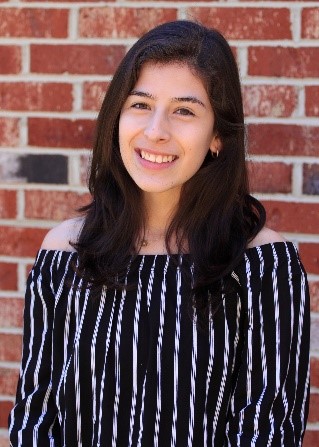 Williamsburg conducting chemistry research. I was surprised when most of my friends back home reacted to the news sympathetically. “That sucks,” they said, “Williamsburg in the summer must be so boring without student life!” I admit, I was nervous those statements would be accurate – but they couldn’t have been further from the truth.
Williamsburg conducting chemistry research. I was surprised when most of my friends back home reacted to the news sympathetically. “That sucks,” they said, “Williamsburg in the summer must be so boring without student life!” I admit, I was nervous those statements would be accurate – but they couldn’t have been further from the truth.
Working 40 hours a week in the lab afforded me the opportunity to learn more about chemistry research in one summer than I did the entire previous year. Yet, what made summer research so memorable wasn’t just the learning, it was also the social and collaborative environment between the whole chemistry department. As I am sure many alumni remember, the summer was full of liquid nitrogen ice cream, mixed lab Friday lunches, and hanging out with everyone after work hours at Paul’s, College Delly, or Brickhouse. I forged close bonds with my lab group that will last past my graduation, and I learned to work as a team to foster a productive environment within a laboratory setting.
I was eager to return for the next summer to tackle my research project and make new memories with the students around me. Of course, all of those plans were thrown out the window when COVID-19 hit the United States. I remember I had just made a major breakthrough in my research project the day before I left for spring break. I was just one Diels-Alder reaction away from finally synthesizing my product of interest. In true TWAMP fashion, I was excited to come back after break to see the progress through. However, we never returned to campus. Spring break became summer break, and I was beginning to think summer research would be cancelled completely as well.
Thanks to the hard work of our faculty, administration, and facility workers, the chemistry department opened its doors to students for summer research with numerous safety implementations. Each lab handled the new regulations in various ways. My lab only had three students, a sharp drop from the seven we had last summer. Some labs chose to have students come in on alternating days, while other labs were mostly doing remote research and literature review. I got used to seeing faces half-covered with masks, stretching plastic wrap over the keyboard of the NMR, and wiping down surfaces at the end of the day.
COVID-19 also brought on new challenges that we hadn’t faced before. Since the spring semester was cut short, there was no opportunity for graduating seniors to teach incoming lab members about experimental techniques and procedures. This lack of transfer of knowledge resulted in more responsibility placed on professors and returning students to ensure that everyone could operate in the laboratory safely and efficiently. Students who chose to embark on remote research also had to figure out what that would entail and how it could be carried out in a way that maximized the learning experience. Additionally, I found out that every breath I took while wearing a mask would instantly fog up my safety glasses. I still haven’t found a solution that doesn’t include taping the top of my mask to my face, except maybe holding my breath when I’m dispensing a strong base into a flask. And of course, we had to practice social distancing within our lab and between other labs. As a result, the social environment was completely different.
I certainly missed the liveliness of Corona Nights and Trivia Nights, the anticipation for tasting new liquid nitrogen ice cream flavors every Wednesday, and meeting other lab groups for lunch. However, we still made the summer memorable and our own in many ways. I finally succeeded in synthesizing the bioactive product I was so excited about, and I am now working on publishing my results. To preserve in-person group meetings, we used chalk to write our reactions on the curved blackboard outside the ISC (and we only had one curious passerby ask us what our complex chemical structures were called). We jammed to various playlists in lab, from Disney hits to 2000’s throwbacks. When outdoor dining opened, we bought lunch to-go and sat outside in Colonial Williamsburg, enjoying the nice weather. Remote students checked in virtually with their lab groups daily and succeeded in gaining an in-depth understanding of the background behind many of the projects they will take over. Professors and students alike met each challenge head on, and we all made it through the summer, together.
When I compare my experiences with research in 2019 vs 2020, they are indisputably different. However, the spirit of both summers remained the same. We learned from each other, supported one another, and although physically distant, built close friendships. The summer of 2020 started with uncertainty, but our ability to transform the situation into a productive summer speaks to the passion and heart of our faculty and students. When I think back on my summers in Williamsburg – one full of gatherings, the other through a pandemic – I am grateful they were certainly not boring.
Scientists Can Inform the Way Forward
Tanner Braman ‘20
My grandmother is a 77-year-old diabetic. Her husband, a 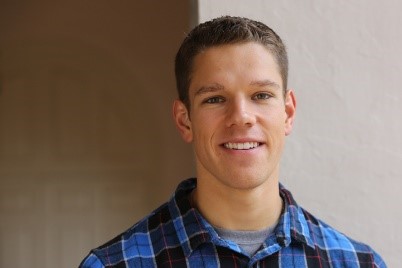 78-year-old emphysemic, struggles to breathe, both with and without his supplemental oxygen. Since March, they have successfully isolated themselves from much of the outside world. They stay in the house or in their car, receiving regular grocery deliveries from my nearby uncle and occasional socially distanced visits from my cousins.
78-year-old emphysemic, struggles to breathe, both with and without his supplemental oxygen. Since March, they have successfully isolated themselves from much of the outside world. They stay in the house or in their car, receiving regular grocery deliveries from my nearby uncle and occasional socially distanced visits from my cousins.
Their isolation has been too successful: my grandmother wants to get out. She wants to swim at the pool and make an occasional visit to the grocery store – not even to buy, only to be around people. She would kill for a pedicure. She is under verbal lock and key by our concerned family, which, rightly, wants to minimize all viral risk for the grandparents. My grandmother has been struggling. She came to me for help. “If I wear a mask, can I go to the grocery store?” “If the pool is outdoors, can I swim?” “I cannot live like this.” “How do I keep us safe?”
If she looks online, she can find all manner of answers and no definitive path forward. She finds herself lost between the dynamism of scientific research and a wealth of online misinformation. She feels boxed in, without any control over her life. I think that her questions and her struggle are universal.
They indicate the opportunity and the responsibility that we scientists have amid the pandemic. We can bridge the divide between lab and home. We can help our friends and families access the information that they need to make the right decisions about their health. We can empower them and help them stick with tough decisions because they are their own.
Do each of us have the definite answers? Absolutely not. Neither should we seek to prescribe explicit actions for individuals or policies for our communities. What we can do, however, is find, interpret, and provide enough information and context to help those around us so that they may make the right decisions for themselves and for the rest of the community.
At the very least, as scientists, we can explain our methods and why the facts of the virus seem fluid. After all, why should I follow someone who never seems quite sure of his course and is always changing direction? By design, the scientific method iteratively reaches a tepid and incremental answer.
I do not expect any of us will be perfect. I will be the first to admit that, early in the pandemic, based on my misunderstanding of aerosolized viral particles, I had decided wrongly to forgo a mask. Professor O’Brien, thankfully, corrected me and referred me to additional research.
During this time of incredible uncertainty and dynamic information, we are uniquely equipped to benefit our families and communities. We can unlock scientific literature, with its jargon and mixed messages, and provide some measure of clarity and stability.
I do not know what the right answers will be for my grandmother. But by considering together what we know and what risks exist, maybe she and I can get her that pedicure, or at the least, justify enduring several more months without one.
 Skip to main content
Skip to main content
